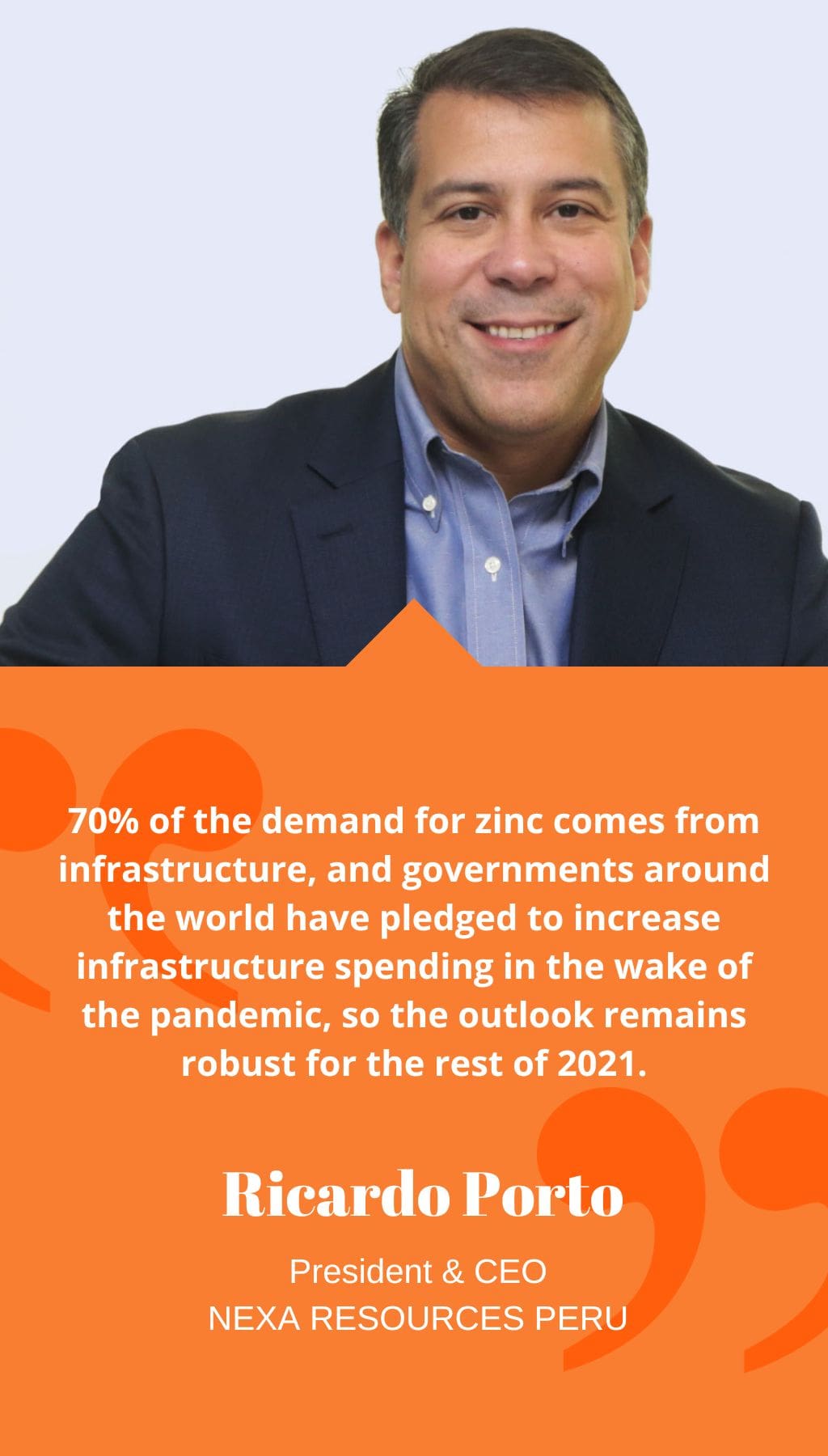
- Peru | 25 May 2021

Could you provide an overview of Nexa Resources’ performance in Peru during Q4 2020 and Q1 2021?
Certainly, the results from Q4 2020 and Q1 2021 were very positive for Nexa Resources. After the lockdown due to the pandemic, the strict protocols required to operate in Peru resulted in an adaptation period where no underground mining operation was able to return to 100% capacity. However, we managed to achieve our third-best quarterly result ever in Q1 2021. This was due, in part, to the high metals prices, but also due to a process of restructuring the company has undergone since before the pandemic. This restructuring includes the introduction of new technology and the revision of mining processes that have resulted in lower costs and higher productivity.
What is the current status of the Magistral copper development project, and what is its timeline for development?
There is a lot of talk about a commodities supercycle, and the one commodity that is indisputably linked to this cycle is copper, which forms the basis of infrastructure development and will play a large role in the electrification transition. Considering this macro outlook, Nexa has a lot of interest in increasing its participation in the copper space, with Magistral being our most advanced project. We finished the detailed engineering and design of the open-pit mine at the end of Q1 2021. We are now in the final permitting phase, and hope to make a construction decision by the end of the year.
What are your views on the current drivers of the zinc market?
In my opinion, the fundamentals of the zinc market have never been stronger. The price peaked in 2017 due to a temporary supply shortage, but this was not backed up by the level of demand we are seeing now. Normally, demand is concentrated into certain regions at different times, but for the first time, we are seeing large volumes being requested globally, including in Latin America. 70% of the demand for zinc comes from infrastructure, and governments around the world have pledged to increase infrastructure spending in the wake of the pandemic, so the outlook remains robust for the rest of 2021.
What is Nexa’s strategy regarding the sustainable development of communities surrounding its operations?
At Nexa Resources, we believe that regardless of where you operate, you need to establish the sustainable development of local communities. This has to be done by training a base of local talent that understands the culture. In some ways, the COVID-19 pandemic presented an opportunity to showcase what the mining industry can do for communities in terms of providing PPE, oxygen, food, and health supplies at a critical time. However, the core of Nexa’s strategy is forming partnerships with local stakeholders so they can work with us and become part of a project.
Can you elaborate on Nexa’s focus to promote workforce diversity and increase the participation of women in the mining industry?
Nexa Resources is considerably above the industry average when it comes to workforce diversity, but there is still a lot of progress to be made. As a company, it is hard to communicate with society if you do not mirror society. Therefore, we need more Peruvians, more workers from local communities, and certainly more women. Having a majority male workforce from a metropolitan area not only narrows your viewpoint but also narrows the talent pool you are hiring from. Nexa’s Empodera Group has highlighted issues that have resulted in a number of organizational changes, including increasing maternity leave to six months in Peru, with flexibility to work the final two months part-time. We are also running training programs at Cerro Lindo and the Cajamarquilla smelter to train female operators, and have readapted mine site infrastructure to create a more adequate working environment.














